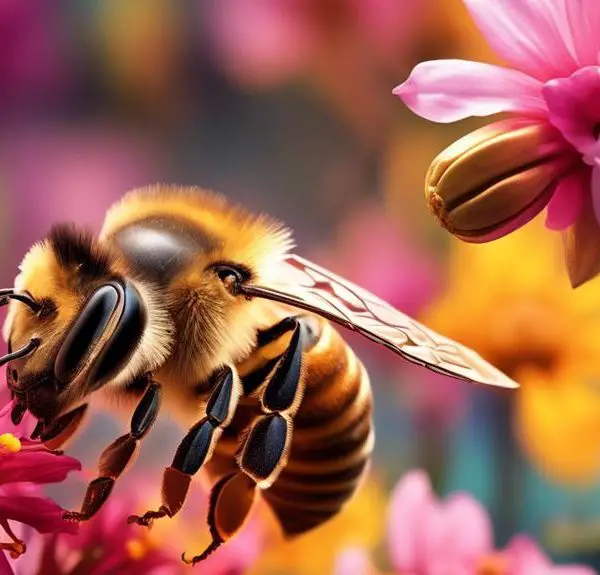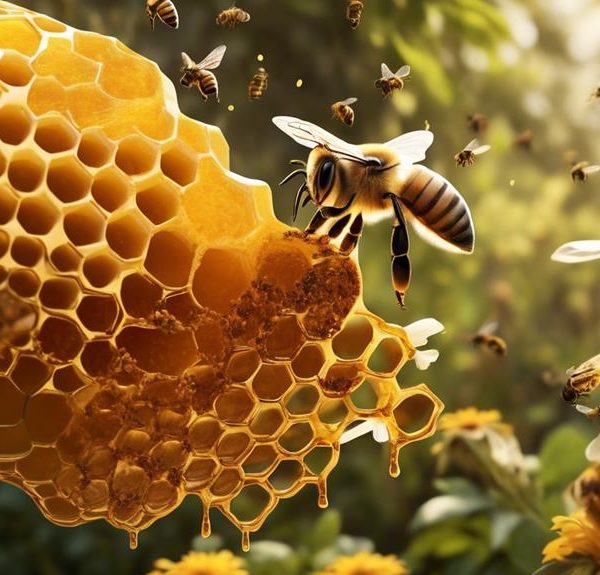Think honey bees are always aggressive? Discover surprising factors that may reveal a docile side to these misunderstood creatures.
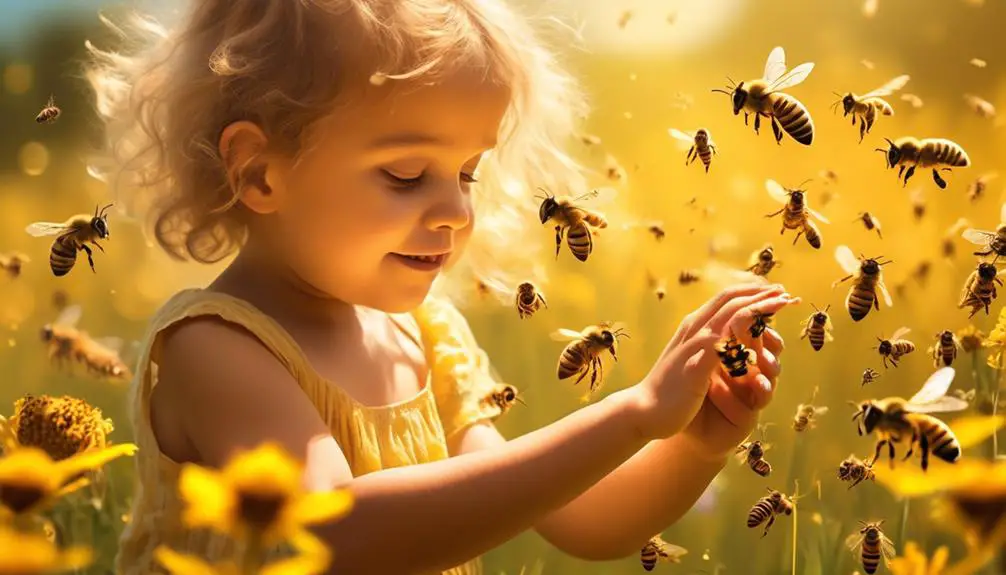
Are Honey Bees Docile
Don't judge a book by its cover, and don't judge a honey bee by its sting. You've probably heard about the aggression of these tiny creatures, but have you ever wondered if honey bees are truly as fierce as they're often portrayed?
Their reputation for being aggressive is widespread, but what if I told you that this isn't always the case? That's right, honey bees may not be the villainous insects you've made them out to be. The nature of their behavior is dependent on a number of factors that might surprise you.
So before you swat away the next honey bee you encounter, you might want to stick around and explore this topic a little further.
Key Takeaways
- Genetic makeup and age, as well as environmental factors, influence honey bee docility.
- The queen bee's pheromones play a significant role in calming worker bees and promoting harmony within the hive.
- Italian honey bees are naturally more docile compared to other strains.
- Human interaction techniques can influence honey bee behavior, with passive and non-threatening approaches resulting in higher docility levels.
Understanding Honey Bee Behavior
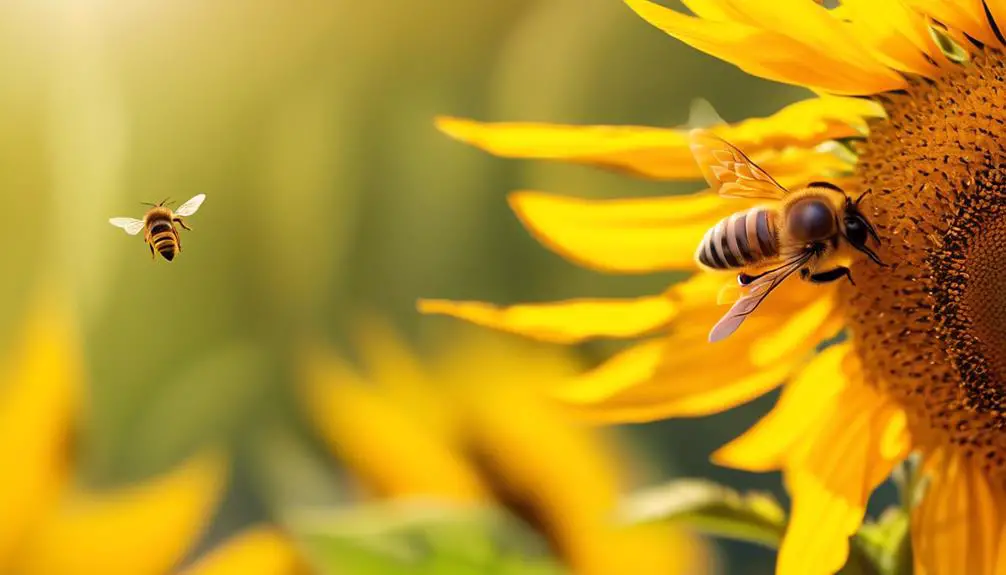
To truly comprehend the docility of honey bees, you need to delve into their behavior, which is profoundly influenced by their social structure, environmental factors, and innate survival instincts. Their social structure is a fascinatingly organized hierarchy, with each bee fulfilling a specific role, from the queen, drones to worker bees. You'd find it intriguing that their behavior can change based on these roles.
Environmental factors, such as availability of food and climate conditions, also shape their behavior. In abundant food situations, they're mellow. However, scarcity can trigger aggressive foraging. Similarly, harsh weather can make them more defensive.
Their survival instincts, too, play a key role. If they feel threatened, they'll retaliate, not out of aggression but survival. But, they're not instinctively aggressive. Remember, their sting leads to their demise, so they'll only use it as a last resort. It's also worth noting that different species have varying degrees of docility. Apis mellifera, or the western honey bee, is particularly known for its gentle nature.
Factors Influencing Bee Docility

While understanding the basic behavior of honey bees gives us a glimpse into their docile nature, it's also crucial to scrutinize the specific factors that influence their docility.
Firstly, you should consider the bee's genetic makeup. Certain strains of honey bees, such as the Italian honey bee, are naturally more docile than others. Likewise, the bee's age plays a role. Young bees tend to be less aggressive than older ones, mainly because their stingers aren't fully developed yet.
Environmental factors also affect bee docility. Changes in weather, for instance, can make bees more defensive. They're particularly sensitive to sudden shifts in temperature and humidity. Additionally, if their hive is frequently disturbed or if they feel threatened, bees are more likely to exhibit aggressive behavior.
Lastly, it's important to mention the impact of the queen bee's pheromones. These chemical signals have calming effects on the worker bees, therefore, maintaining a healthy queen is essential for a docile hive.
Honey Bees Vs Other Bee Species

In comparing honey bees with other bee species, you'll quickly notice significant differences in behavior and temperament. Honey bees, for instance, are generally more docile than their relatives, like the wasps, hornets, and bumblebees. You'll find that honey bees only attack when they feel threatened, whereas wasps can be aggressive even unprovoked.
Let's delve into the honey bees' docility in a more analytical sense. Honey bees, unlike other bee species, have a barbed stinger, which can only be used once. This causes them to die after stinging, making aggression a last resort. They'll only attack if their hive's safety is in question.
In contrast, wasps, hornets, and bumblebees have smooth stingers, allowing them to sting multiple times. This anatomical difference fosters a more aggressive disposition, as these species can attack without facing the same fatal consequences.
Another factor contributing to honey bees' calm nature is their social structure. A colony functions cohesively, and disrupting that harmony with aggressive behavior isn't beneficial. You'll find that other bee species, with less rigid social structures, exhibit more aggressive behavior patterns.
The Role of Queen Bees
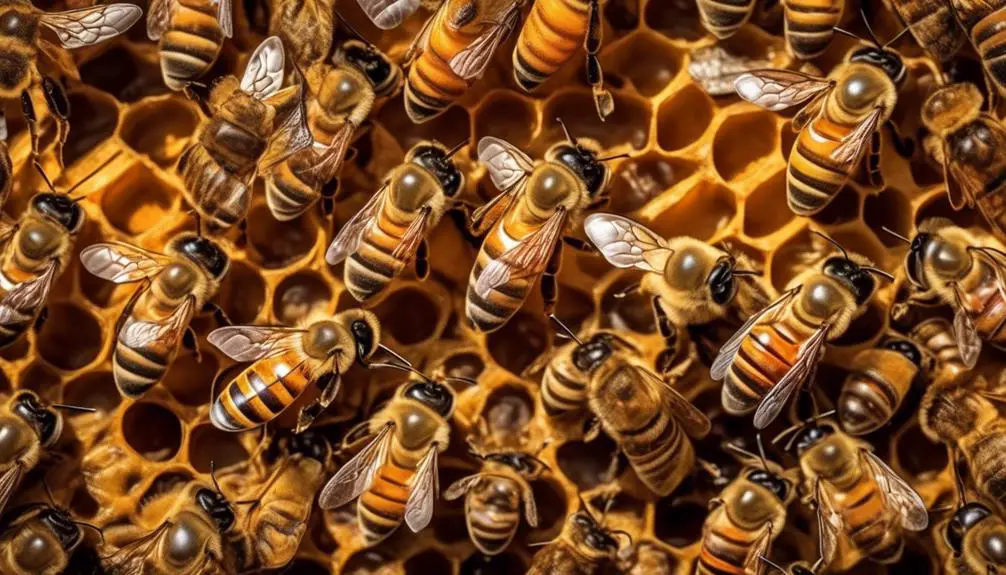
Shifting our focus to the queen bee, you'll find her role is pivotal in maintaining the docile nature of the honey bee colony. The queen bee's primary function is to lay eggs. However, she also produces chemicals called pheromones that influence the behavior of the colony.
Interestingly, one of these pheromones, dubbed 'queen substance,' promotes harmony and deters aggression within the hive. Absence or reduction of this pheromone triggers worker bees to raise a new queen, indicating its crucial role in the colony's stability.
The queen also mediates the hive's population. She adjusts the number of eggs she lays based on the colony's food supply and the number of worker bees available to care for the brood. This balance prevents overcrowding and competition, contributing to the overall docility of the hive.
Additionally, the queen bee's mating habits influence the hive's genetic diversity. She mates with multiple drones during her nuptial flight, ensuring varied genetic input. This genetic diversity increases the colony's resilience and adaptability, reducing aggression related to competition for resources.
Human Interaction and Honey Bees
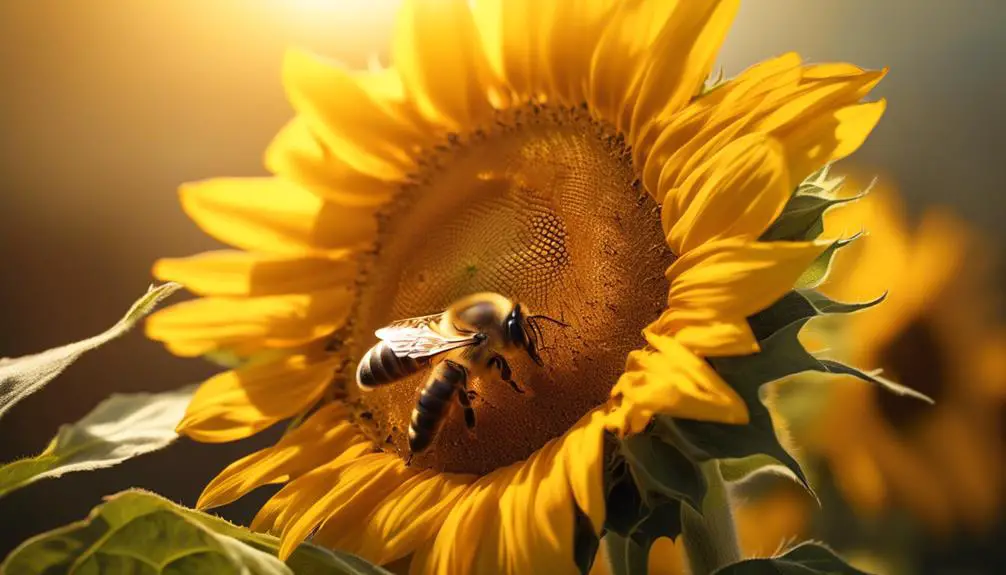
You'll notice a fascinating dynamic unfold when humans interact with honey bees, a relationship that has significant implications on the behavior and docility of these industrious insects. Beekeepers, in particular, have a unique interaction with these creatures, employing careful techniques to ensure honey bees remain calm despite their intrusions.
Let's delve into this further with a table:
Interaction Type | Honey Bee Behavior | Docility Level |
|---|---|---|
Passive Interaction | Bees continue their tasks, largely ignoring the human presence. | High |
Active, Non-threatening Interaction | Bees exhibit curiosity, but not aggression. | Moderate |
Active, Threatening Interaction | Bees respond defensively, potentially stinging. | Low |
Through passive interaction, you're largely ignored, indicating a high level of docility. When you actively engage but don't pose a threat, bees show moderate docility. However, if you threaten their colony, docility decreases sharply.
Understanding these interactions helps manage honey bee populations, ensuring their survival and our continued access to their honey. It's a delicate balance, but with careful interaction, you can maintain a peaceful coexistence with these surprisingly docile creatures.
Conclusion
So, you've discovered honey bees aren't always as aggressive as perceived. Their docility varies, influenced by factors like species, the queen bee's character, and human interaction.
Compared to other bees, honey bees are relatively peaceable. However, remember, their demeanor can change, especially when they feel threatened. Understanding their behavior helps promote coexistence.
So, don't be too quick to swat away these industrious creatures; they're vital to our ecosystem.

